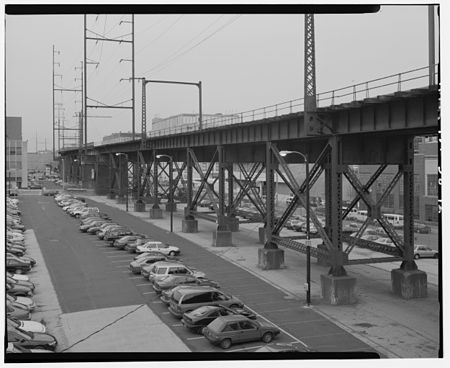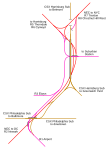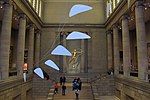West Philadelphia Elevated
1900s establishmentsBridges in North AmericaBridges in PhiladelphiaBuildings and structures in PhiladelphiaHistoric American Engineering Record in Philadelphia ... and 5 more
Pennsylvania RailroadRailroad bridges in PennsylvaniaSteel bridgesStone bridgesTransportation in Philadelphia

The West Philadelphia Elevated, also known as the High Line or Philadelphia High Line, is a railroad viaduct in the western part of Philadelphia, Pennsylvania. The 8,140-foot (2,480 m) structure spans the railway lines of 30th Street Station, parallel to the main track of the station, in a north-south direction. The 1,045-foot (319 m) long approach made of brick arches is the longest brick bridge and probably even the longest brick building in the United States. The viaduct was built in 1903 by the Pennsylvania Railroad (PRR) and is now part of the Harrisburg Subdivision of CSX Transportation.
Excerpt from the Wikipedia article West Philadelphia Elevated (License: CC BY-SA 3.0, Authors, Images).West Philadelphia Elevated
Schuylkill Expressway, Philadelphia
Geographical coordinates (GPS) Address Nearby Places Show on map
Geographical coordinates (GPS)
| Latitude | Longitude |
|---|---|
| N 39.962038 ° | E -75.184409 ° |
Address
Schuylkill Expressway
Schuylkill Expressway
19130 Philadelphia
Pennsylvania, United States
Open on Google Maps










